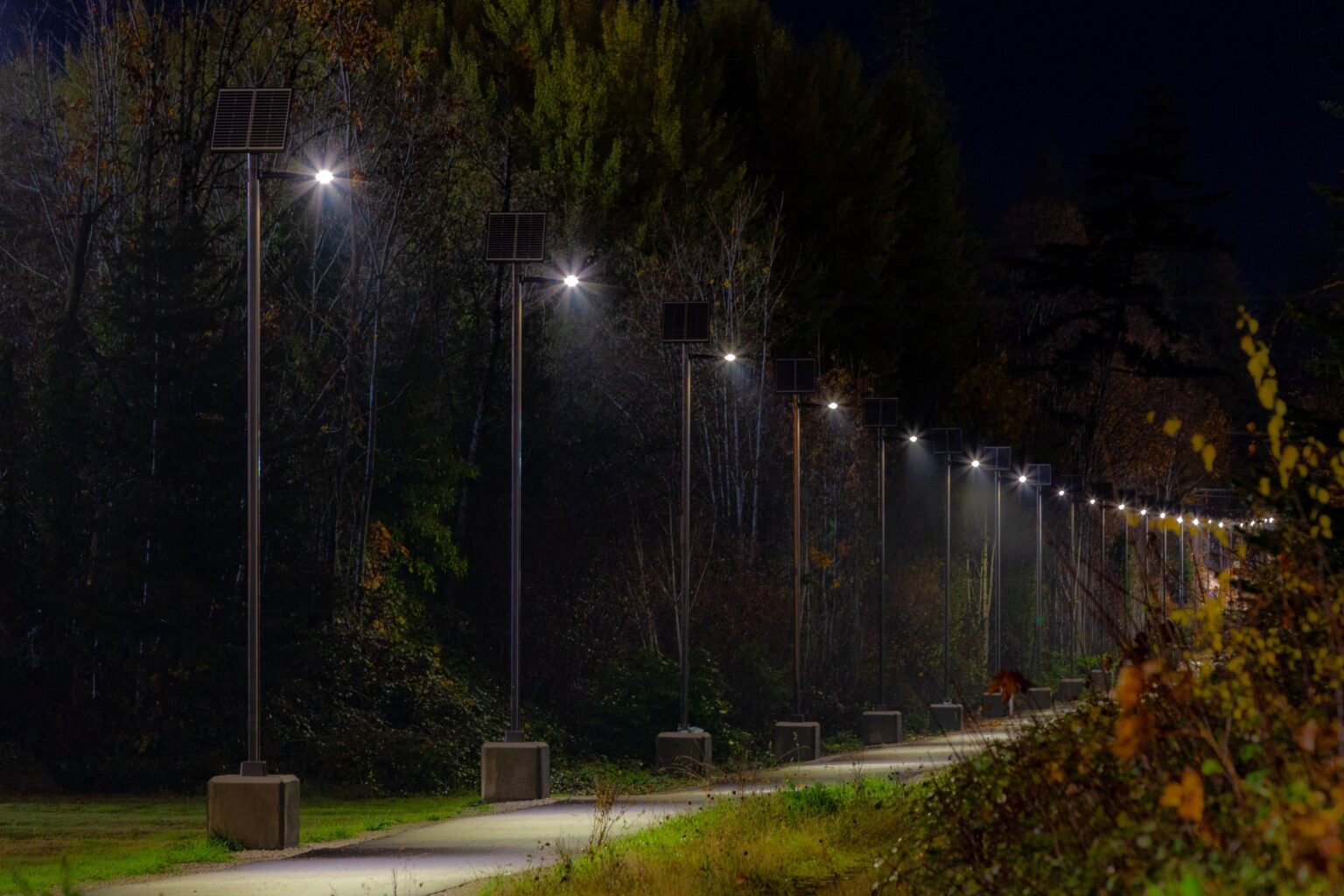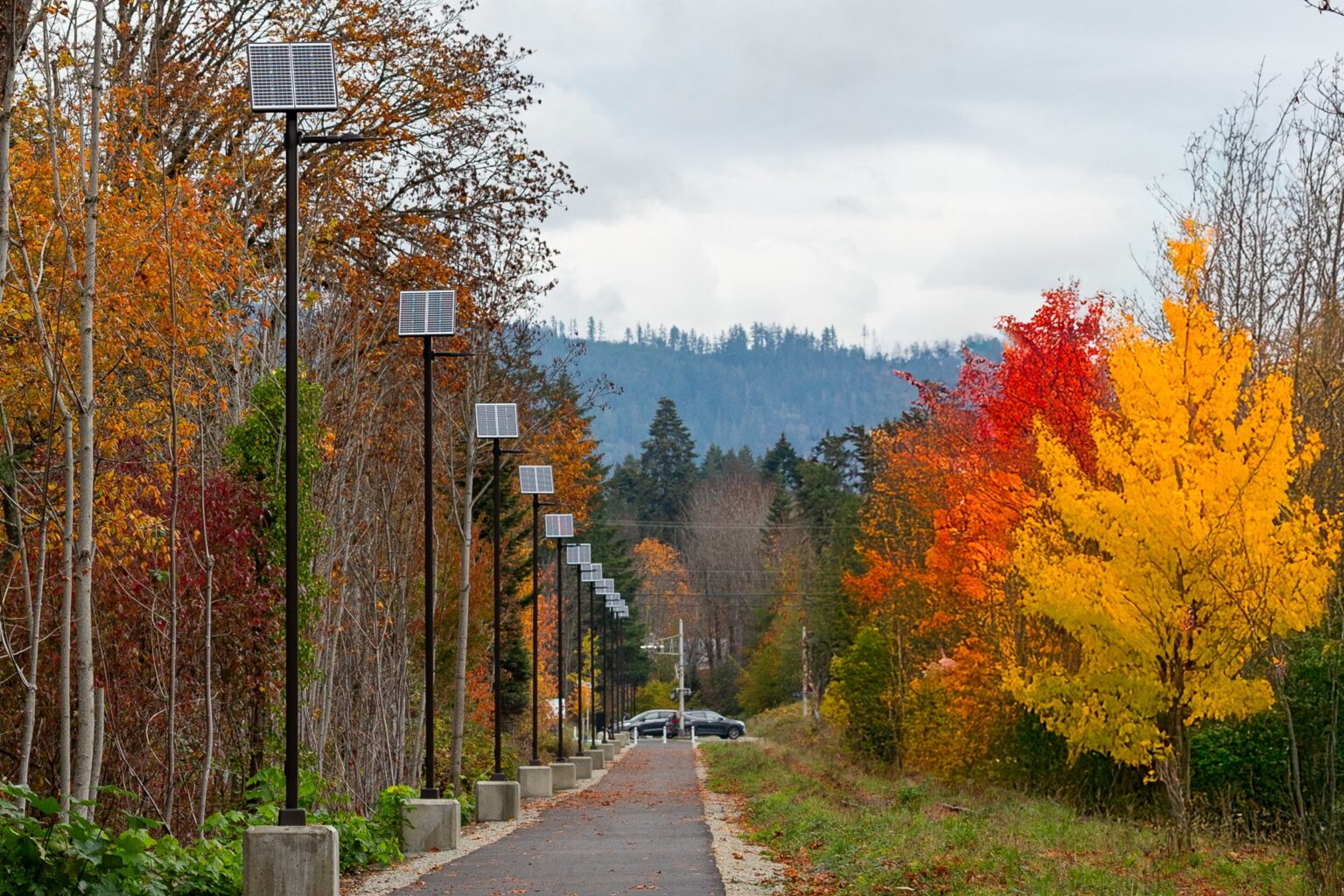Port Alberni, located on Vancouver Island, is undergoing a major transformation. The city, known for its stunning natural heritage, has launched an ambitious project to modernize its infrastructure while promoting active and sustainable mobility. As part of this initiative, the municipality chose to illuminate its brand-new 4 km Quay to Quay pathway with 56 UP2 solar streetlights, supplied by our North American subsidiary, Sol by Sunna Design.
Port Alberni – CANADA

Solar lighting is nothing new in Port Alberni. In 2018, the city launched a pilot project to test the reliability of UP2 solar streetlights in local weather conditions. The success of this trial convinced city officials to scale up the solution for the Quay to Quay pathway. This choice addresses multiple strategic goals:
Today, 56 UP2 solar streetlights illuminate this key urban corridor, enhancing safety and accessibility without needing an electrical network. By adopting a fully autonomous and optimized solution, the city minimizes light pollution while protecting the wildlife and natural surroundings that make it a popular destination.

The autonomous UP2 streetlights are part of the UP series, a compact, high-performance, and connected range. They provide more than just sustainable solar lighting—they incorporate advanced innovations that optimize energy use and simplify maintenance:
Beyond their technical performance, these streetlights are supported by an advanced management tool: SunnAPP. This system enables:
Thanks to this solution, Port Alberni enjoys a more intelligent, more responsive, and more cost-efficient public lighting system.

With the Quay to Quay pathway, Port Alberni proves that autonomous smart lighting can be a powerful driver of urban transformation. As a key urban connector, this pathway enhances mobility, promotes sustainable transportation, and showcases local culture and heritage.
Since its inauguration, residents have embraced the new space, enjoying a safer, more welcoming, accessible environment day and night. By choosing autonomous lighting, the city demonstrates that it is possible to develop attractive public spaces while reducing infrastructure costs and carbon emissions. A true success story highlights the essential role of solar lighting in the energy transition of cities worldwide.
